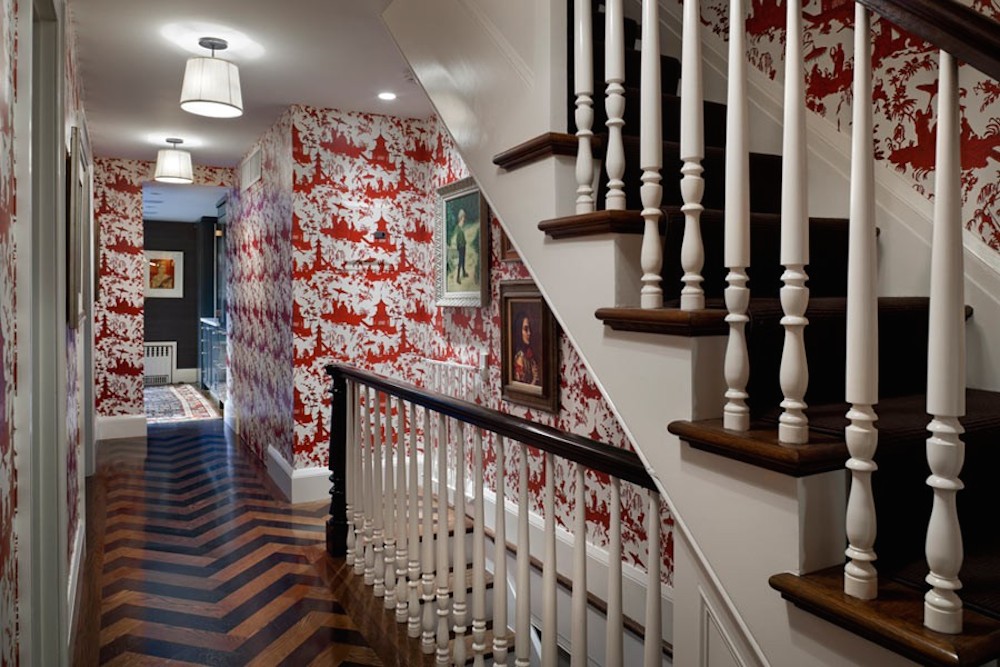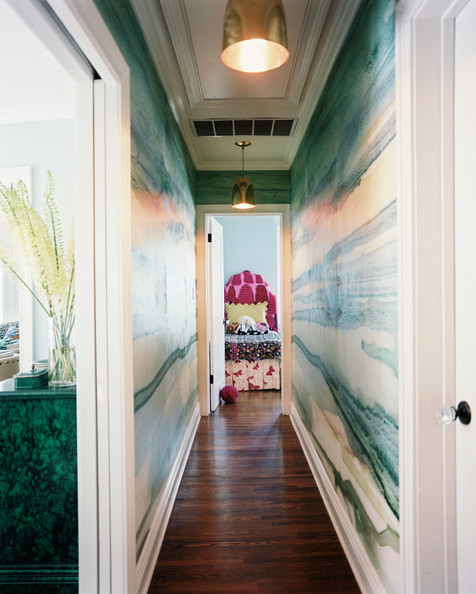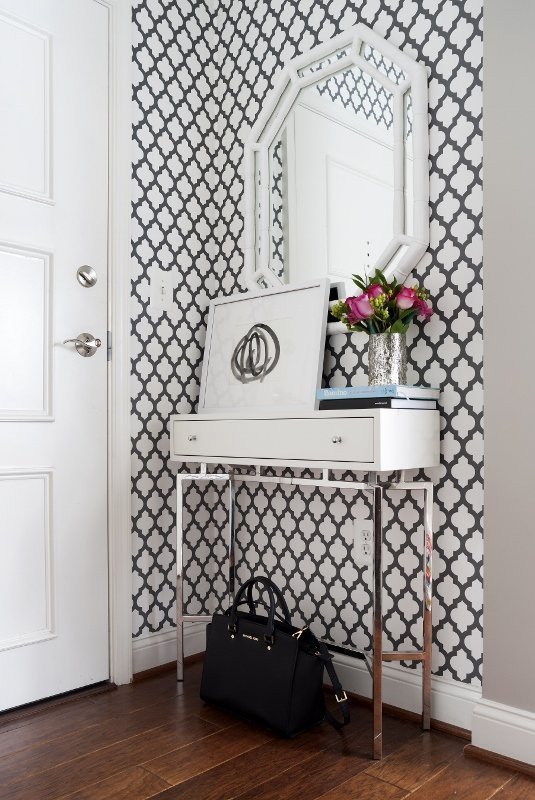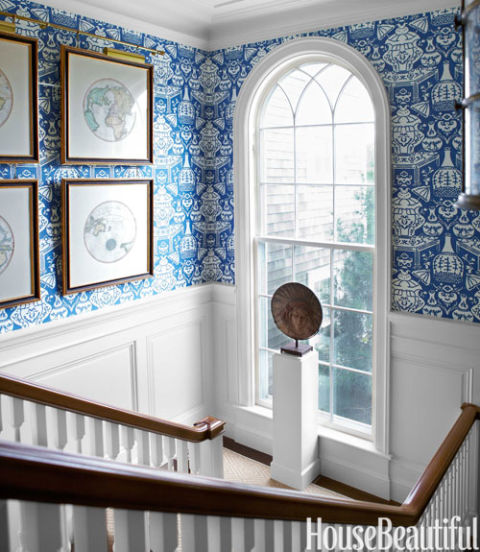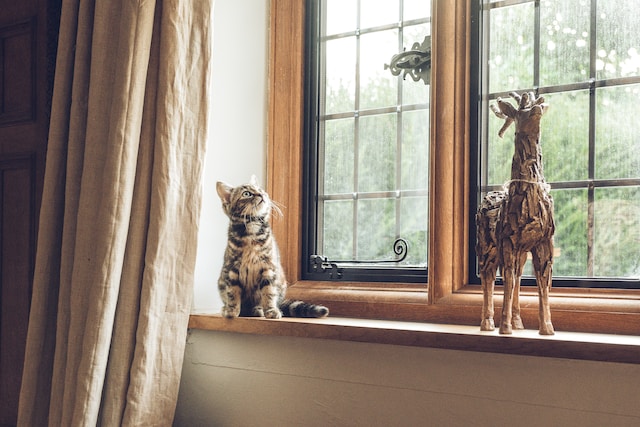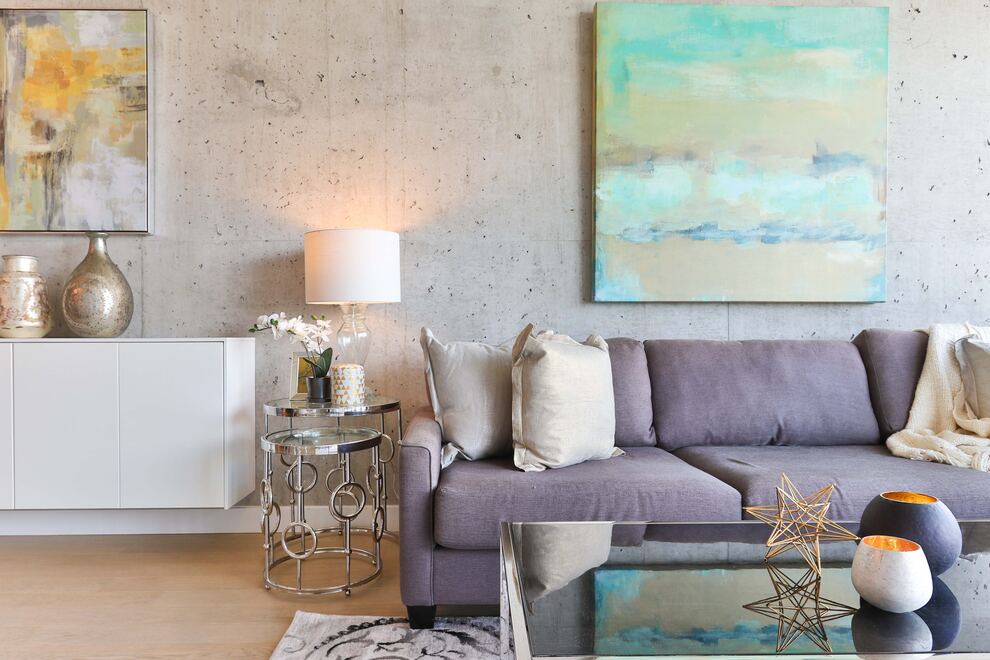Design Dictionary is a new feature that defines common (and occasionally very uncommon) terms used in interior design, architecture, and home improvement.
Wallpaper gets a bad rap. It’s often thought of as a very permanent décor element that’s pricey, hard to install, and hard to remove. Some of this poor reputation is deserved—you can find delicate papers that retail for hundreds of dollars a yard—but my suspicion about the allergy to wallpaper is that it requires a firm point of view from a décor perspective. You may get cavalier about choosing a paint color, since the wrong color is a relatively easy problem to fix. Paper, on the other hand, requires a deliberate choice about pattern that most people aren’t willing to make—and mistakes are hard to remedy.
New product advancements have made it easier than ever to find a wallpaper that fits your lifestyle. For example, if you’re a renter or commitment-phobic, there’s removable products. If you’ve fallen in love with all things retro, you can find the damasks, foils and flocked papers to fill thousands of time capsule homes. If you’re decidedly modern, there’s 3D wallpaper. If you’ve got kids who color on the walls, embrace the habit with fill-in-the-scene paper. We live in a plentiful time.
If you’re willing to make the leap to wallpaper, you should know a few terms before you start shopping. Here is a brief glossary:
Single vs. Double rolls
These are the most common ways of packaging wallpaper. A single roll is one continuous piece of wallpaper. From there, you have European single rolls (which measure 20-1/2” wide and 5-1/2 yards long) and American single rolls (27” wide and 4-1/2 yards long). Double rolls are a continuous piece of wallpaper that’s equal to two single rolls. Double rolls are occasionally called bolts.
Pre-pasted vs. Paste-the-wall
Wallpaper has to stick to your wall somehow. You can either buy paper that comes with the adhesive already on the back of it (pre-pasted) or you can buy a product that involves you applying adhesive to the wall first, then placing the paper on top (paste-the-wall). If you go for the former, know that you’ll have to activate the adhesive by wetting the paper with water. If this paragraph has you convinced wallpaper is too much trouble, then you can opt for repositionable or temporary wallcoverings, which stick to the wall like Con-Tact paper.
Straight match vs. Drop match
Though they sound like wrestling terms, these phrases refer to the way the pattern is printed and aligned on the paper. A straight match means that every wallpaper strip will match up at the ceiling line. A drop match means that every other wallpaper strip will match up at the ceiling line. Drop matches usually create diagonal designs.
Booking
This phrase refers to the action needed to activate the adhesive on pre-pasted wallpaper. After you wet the paper, you’ll fold it (without creasing it) with pasted sides together and leave it for a few minutes. This lets the paste soak into the backing. The booking time will vary by paper.
Sizing
A product that’s applied to a wall and makes wallpaper stick better. It doesn’t even out the wall (like a primer), but it makes the surface more porous, which increases the tack of the adhesive.
Liner paper
Think of it as a slip for your walls – it covers imperfections and lets the wallpaper rest smoothly.
Pattern repeat
The distance, measured vertically, between the point of one element in a pattern to the next identical one.
Hand-blocked patterns
This is a type of printing technique. Here, an artisan applies ink to a hand-carved block, then presses it against the paper to create the pattern. It’s labor-intensive and impressive.
Directional print
In order for this wallpaper to look right, it’ll have to be installed in an indicated direction.
Surface printing
Another type of printing technique. In surface printing, a machine lays down a heavy amount of ink, which creeps when it hits the paper. The results are imprecise, but artful in their own way. This technique is often used to create florals.
Colorway
This refers to the colors comprising the wallpaper design.
Top Image Credit: Coburn Architects PC
Love this post? Read the rest of the Design Dictionary series!
